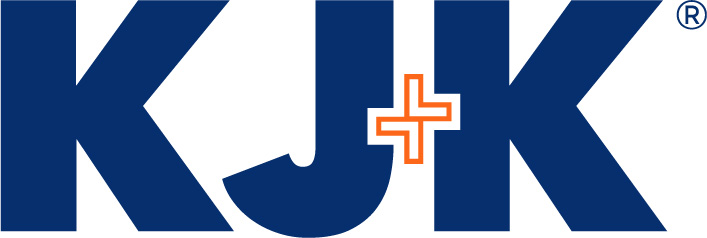By Susan Stone, Justine Lara Konicki & Melissa Yasinow
The Coronavirus Aid, Relief, and Economic Security Act (CARES Act) has significant implications for the 45 million Americans with student loan debt and their employers. With Americans saddled with $1.6 trillion in student loan debt—surpassing credit card debt and auto loans—it is important for individuals and businesses to understand how the CARES Act impacts student loan payments during this difficult time.
Employers Can Pay Up to $5,250 of Their Employee’s Student Loans Tax Free for 2020
The CARES Act amends Section 127 of the Tax Code’s rules on Educational Assistance Programs. Under the Code, Employers may pay up to $5,250 to an employee, or to the employee’s lender, for the repayment of that employee’s student loans. The funds cannot be used to pay for the student loans of an employee’s dependent or spouse. While already a fringe benefit employers can provide employees, this Amendment to the Code gives employers an extra incentive to participate this year by providing a tax-free benefit for payments to their employees’ student loan debt.
This year, because of the CARES Act, the money spent by the employer, either in a lump sum or spread out monthly, can be treated as a business deduction and is not considered as W-2 income for the employee. Employers should remember, however, that the Tax Code’s requirements for “educational assistance programs” still apply to this CARES Act expansion. The employer must make the payments pursuant to a written plan, cannot discriminate in favor of highly compensated employees and must provide reasonable notice of the availability and terms of the program to eligible employees.
This CARES Act expansion applies to all student loan debt, whether private or federal, and unlike other provisions, is not limited to only debt owned by the U.S. government.
Federal Student Loan Payments and Interest Are Suspended Through September
Payments on all student debt owned by the U.S. Department of Education are suspended at 0% interest from March 13, 2020 until Sept. 30, 2020. During this time, known as “administrative forbearance,” no payments are owed, and no interest accrues, on federally owned Direct Loans, Federal Family Education Loans (FFEL Loans) and Perkins Loans. This suspension does not apply to privately owned loans, including FFEL Loans owned by private lenders or Perkins Loans owned by colleges and universities. Consolidation is an option for those with privately owned FFEL Loans or Perkins Loans, but borrowers should consider the long term interest rate and capitalization consequences.
Payments Made During the Forbearance Period Can be Refunded or Used to Pay Down Principal
Between March 13, 2020 and Sept. 30, 2020, all automatic federal student loan repayments are halted. Any payments made during that time, including auto-debit payments, can be refunded. Borrowers may choose to continue paying their debt without penalty. Such payments will first be applied to any interest that accrued prior to March 13, 2020, and then the remainder will go to outstanding principal.
Garnishment Actions and Interest on Defaulted Federal Student Loans Are Halted
Until Sept. 30, 2020, all garnishments and collection actions on defaulted federal student loans are halted, and no interest will accrue. This means that the amounts owed on defaulted student loans should not increase from March 13 through Sept. 30, 2020, and there should not be any garnishment of wages, Social Security payments or tax refunds. If a garnishment occurs, then you are entitled to a refund. If the process to withhold your tax refund was completed before March 13, 2020, however, then the government may keep it. If you choose to make payments on your defaulted federal student loans at this time, then you may do so without penalty. However, the payments will first be applied to any interest that accrued prior to March 13, 2020, and then the remainder will go to outstanding principal.
Suspended Payments Satisfy Time Requirements for Those Under PSLF and Income-Driven Repayment Programs
For those who are repaying federal student debt through the Public Service Loan Forgiveness (PSLF) or through Income-Driven Repayment programs (such as traditional IBR, PAYE or REPAYE) the suspended payments from March 13 until Sept. 30, 2020 still count as “payments” for each program’s time requirements. Generally, under PSLF, borrowers must make 120 qualifying student loan payments while employed by a qualified public interest employer to have the remainder of their debt forgiven, tax-free. For those repaying through one of the income-driven programs, borrowers must pay a portion of their discretionary income for either 20 or 25 years, with the remainder of the debt forgiven as a taxable event.
For the time during administrative forbearance to count for PSLF purposes, a borrower must have Direct Loans (not FFEL loans), have been enrolled on a qualifying repayment plan prior to the suspension, and work full-time for a qualifying employer during the suspension period. If a borrower has been laid off, furloughed, or had their hours reduced to less than 30 hours per week as a result of this crisis, then the suspended payments do not count toward PSLF’s time requirements.
For those already in an income-driven repayment program, all suspended payments during the administrative forbearance period should count as qualifying payments under the program. If you experience a significant income change while on an income-driven repayment plan, then you can update your information with the U.S. Department of Education to get a new payment amount based upon your current income. After the forbearance period ends on Sept. 30, 2020, monthly payments will resume at the new amount.
If you have any questions about how the CARES Act impacts your rights or opportunities when it comes to student loan repayments, please contact Justine Lara Konicki (jlk@kjk.com or 216.736.7211), Susan Stone (scs@kjk.com or 216.736.7220), Melissa Yasinow (may@kjk.com or 216.736.7205) or any of our Banking & Finance or Student & Athlete Defense professionals.
